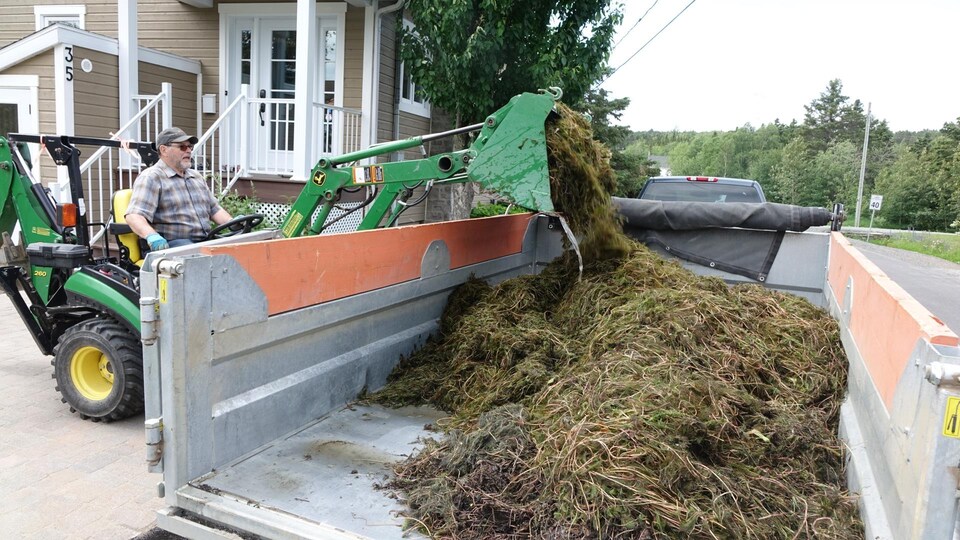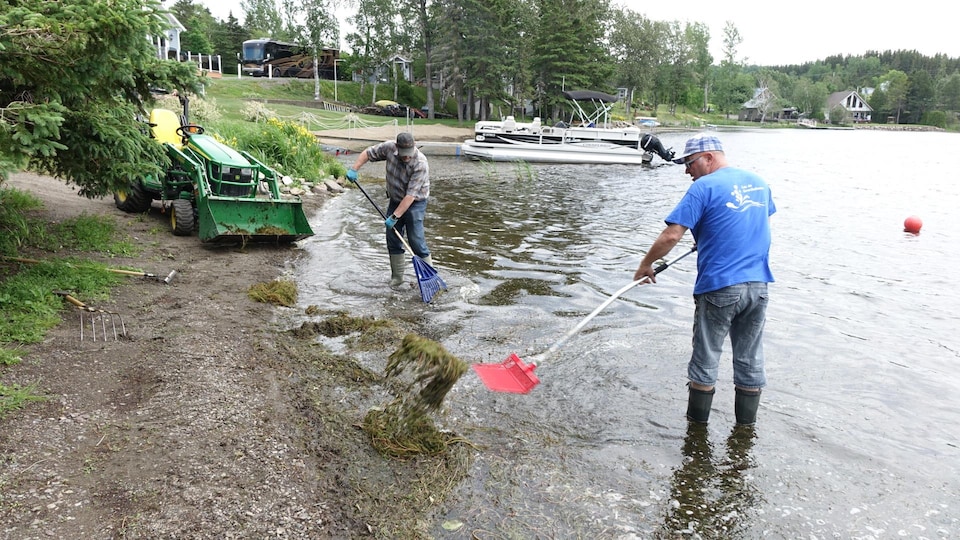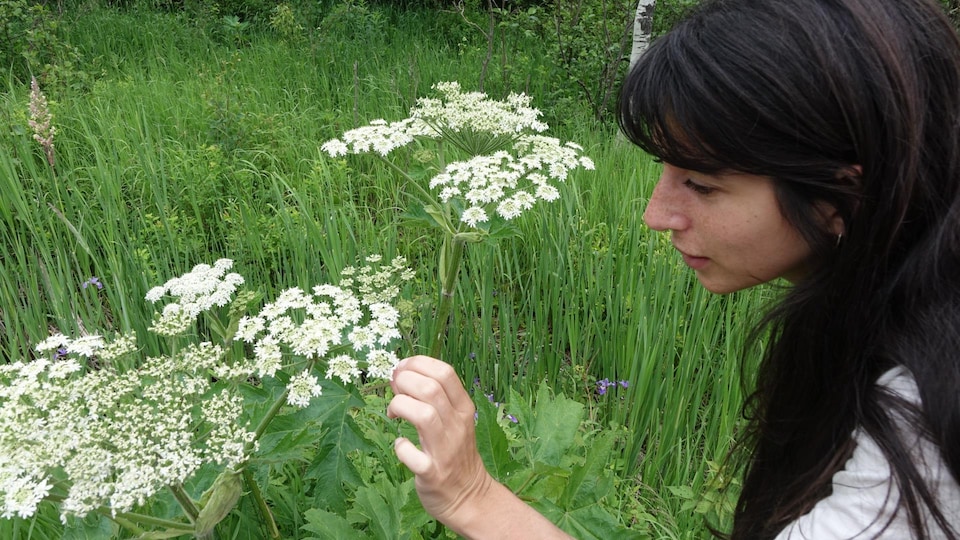The fight against invasive plants continues in Bas-Saint-Laurent
The fight against invasive plants continues in Bas-Saint-Laurent

Since 2016, Eurasian Watermilfoil has been spreading in Gros Ruisseau Lake, between Mont-Joli and Saint-Joseph-de-Lepage. This invasive exotic algae threatens several bodies of water in Quebec. It is observed in more than 200 lakes in the province.
According to the president of the Association of residents of Lac du Gros Ruisseau, Gilles Gaudreault, since 2016, it’s hell. Last year, a day […] we picked up four trailers.
Eurasian Watermilfoil has shallow roots, but its stems can reach six meters in height. Its flowers, which contain thousands of seeds, and its branches, which can reproduce on their own, make its propagation extremely easy and fast. The boats that navigate on water bodies are also one of its vectors of proliferation.
Aquatic activities such as swimming, fishing or boating can be compromised by this invasive plant. The ease with which it reproduces can even affect the real estate value of waterfront properties.
The biologist of the Northeastern Bas-Saint-Laurent Watershed Organization, Marie-Camille St-Amour, explains that the plant is mainly propagated by boats which change water bodies and which do not get washed. A small shard can take root in a new lake, so that’s why the world is advised to wash their craft when entering and exiting a lake.
It’s almost impossible to eradicate it, so we’re more in control mode and living with it.
Every summer, the Association of Residents of Lac du Gros Ruisseau collects plant fragments on the shore to try to limit its effect on waterfront properties.
The municipalities of Mont-Joli and Saint-Joseph-de-Lepage also asked last year to avoid boat trips on the lake to limit the spread of Eurasian watermilfoil.
According to Gilles Gaudreault, the body of water is already 85% invaded this year.
Other invasive plants to watch out for
In addition to Eurasian Watermilfoil, the Northeastern Bas-Saint-Laurent Watershed Organism is continuing its fight against giant hogweed, cow parsnip and spondyle hogweed this summer.
Giant hogweed is an invasive exotic plant. A seed can survive in the earth for about seven years. It is considered dangerous because of the lesions caused by its sap. This breaks the natural protection against UV rays on our skin. Exposure to the sun can thus create serious burns.
In total, there are about fifteen colonies known in Bas-Saint-Laurent of giant hogweed.
To eradicate them, the biologist Marie-Camille St-Amour has already done a first treatment this spring.
To eliminate the plants, she uproots them with a shovel. A return in three weeks is planned to pull out the roots that she could have forgotten. Throughout the summer, she will also inspect the plants that are reported to her and determine if it is a new area.
Cow parsnip is native to Quebec, so the Northeastern Bas-Saint-Laurent Watershed Organism does not deal with it. However, it remains dangerous since it can cause burns. It can also be confused with giant hogweed.
Spondyle hogweed, for its part, suffocates local plants. It has spread more and more in Matapedia over the past ten years.
To differentiate the three invasive plants, Marie-Camille St-Amour suggests looking at the leaves. The woolly, below the leaf, it is hairy, there is a small down. The Caucasus is very waxy. Really no hair at all. She’s getting really big, she’s gigantic. Generally, it is easy just by its size to tell them apart. The spondyle is the same size as the woolly one, but it has five or seven leaflets, sometimes even nine leaflets, so you can imagine more little leaves on one stem, and it is hairy everywhere, everywhere.
Citizens are encouraged to report giant hogweed plants with the Sentinel application of the Ministry of the Environment.
They can also contact the Northeastern Bas-Saint-Laurent Watershed Organism by taking photos of the plant, leaves, stems and flowers, and communicating its precise location.







